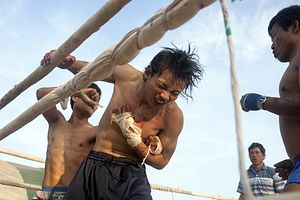Hidden from the world and divided by fighting, the veil has been lifted on Myanmar’s Karen State. Reforms introduced by the quasi-civilian government—which saw ceasefires signed with nearly all the armed groups—have brought the promise of development for a state wracked by conflict for over six decades.
Signs of progress are already emerging. The Thai border town of Mae Sot and Myawaddy in Myanmar have been designated as part of a special economic zone. Karen State capital Hpa-An became an industrial zone in 2012. A new highway from Myawaddy to Hp-An is in the works, as is a second friendship bridge connecting the two countries. Travel restrictions on land crossings for foreigners were lifted at several of the border checks in late August of last year.
Recently, the Karen National Union played host to the country’s most prominent ethnic armed groups at their Hlaingbwe Township headquarters. Discussions centered on the government-initiated nationwide ceasefire scheme.
Despite all of these developments, pressing issues remain unresolved. Much of the state is still heavily militarized and off limits to foreigners. Troop reduction and the removal of the thousands of landmines buried in former conflict zones still need to be addressed.












































